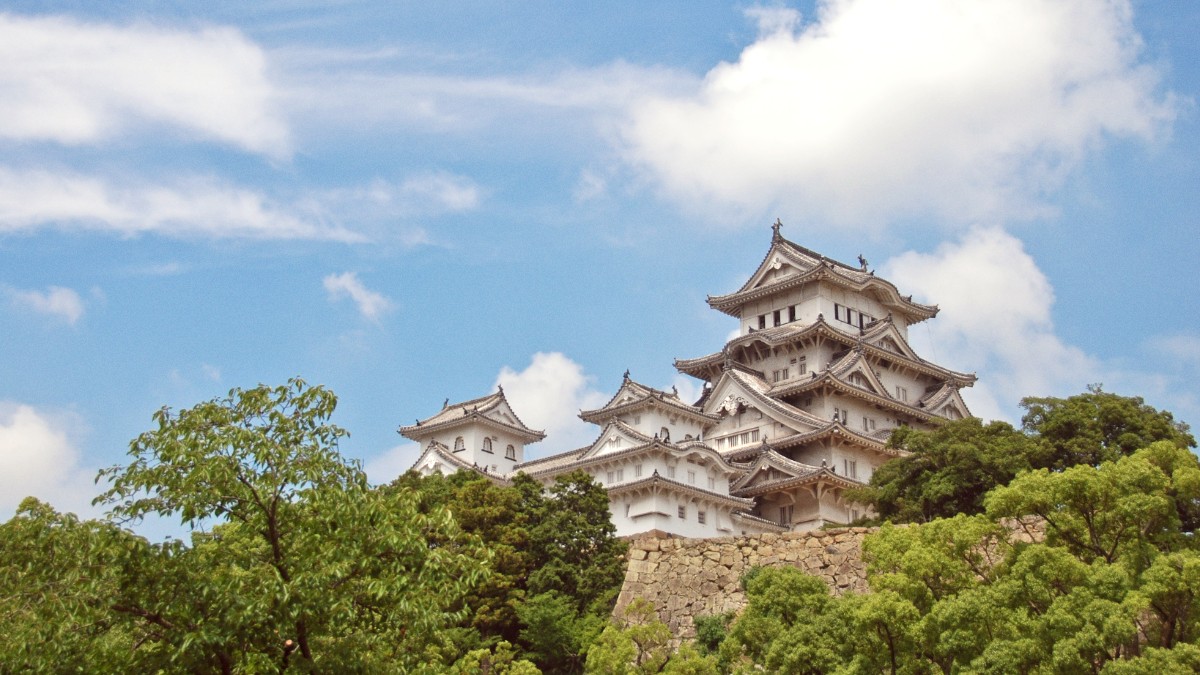
Western Honshu, Japan
Its landscape features a mix of gentle slopes and dense forest, culminating in the highest point, Mt. Misen, which reaches 535 meters (1,755 feet).
Miyajima is a small island, separate from the mainland by a narrow strait, requiring a short ferry ride to reach its shores.
The island is part of the Setonaikai National Park, demonstrating the beauty of Japan's inland sea and views of the surrounding area.
Miyajima's history stretches back over a thousand years, closely tied to nature worship and Shinto deities. The island itself is a sacred place, a tradition shaping many of its customs and buildings. Itsukushima Shrine began as a simple structure in 593 AD, dedicated to three Munakata goddesses.
The shrine gained prominence in the 12th century under Taira no Kiyomori, who rebuilt it in its current grand, over-water style. This design mirrors Heian period aristocratic residences, making the shrine appear to float. Mt. Misen, the highest peak, is a deep spiritual past. Kobo Daishi established Daisho-in Temple there in 806 AD.
Itsukushima Shrine's origin as a simple structure.
Taira no Kiyomori rebuilds the shrine in its iconic over-water style.
Kobo Daishi performs ascetic practices on Mt. Misen and establishes Daisho-in Temple.
The island was once considered so sacred that births and deaths occurred on the mainland to maintain its purity.
Miyajima combines Shinto reverence for nature and deep Buddhist traditions.
The entire island was once considered so sacred that common people were forbidden to live there. Births and deaths also occurred on the mainland to maintain the island's purity.
Miyajima's blend of Shinto reverence for nature and deep Buddhist traditions creates a rich historical landscape for all visitors.
Daisho-in Temple, with its many halls and statues, reflects centuries of religious dedication and serves as a powerful center of Buddhist learning.
Miyajima, or "Shrine Island," features a mix of iconic views and peaceful moments.
Itsukushima Shrine, with its "floating" torii gate, is an UNESCO World Heritage site and a top attraction. You can see the gate appear to float at high tide and walk to its base during low tide.
The Omotesando Shotengai, the main shopping street, bustles with shops selling local treats like Momiji Manju (maple-leaf shaped cakes) and fresh oysters. Miyajima has a compact experience of Japan's natural beauty, cultural heritage, and calm atmosphere.
Itsukushima Shrine's 'floating' torii gate is an UNESCO World Heritage site.
Mt. Misen offers panoramic views. Access the summit by hiking or the Miyajima Ropeway.
Wild Sika deer roam freely across the island. Do not feed them.
The Omotesando Shotengai, the main shopping street, bustles with shops selling local treats like Momiji Manju (maple-leaf shaped cakes) and fresh oysters.
Mild and pleasant temperatures, increasing rainfall in May. Humidity stays comfortable.
Hot and humid, with a rainy season (tsuyu) from June to mid-July. Late July and August are often sunny but very hot.
Pleasant and mild weather. Rainfall decreases, humidity becomes comfortable. Clear skies are common.
Typically from May to October, with most activity in August-September. Heavy rain and strong winds disrupt travel.
Early June to mid-July. Frequent light rain and high humidity rather than heavy downpours.
Summers can be very hot and humid (above 35°C). Winters are generally mild but reach freezing at night or high elevations.